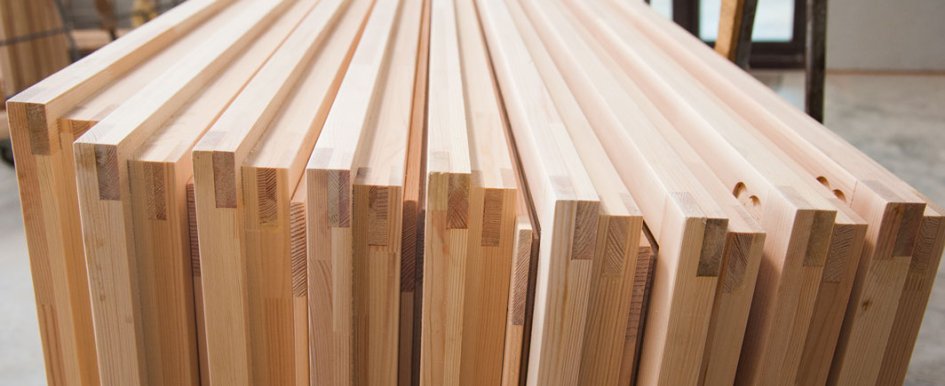
Wood is one of nature’s most amazing materials. It’s attractive, warm and strong, and it comes in an amazing array of natural patterns. To protect that natural look, architectural wood door manufacturers make significant efforts to harvest wood without damaging the source material. They mill it to capture the desired grain and pattern and then kiln-dry it to an appropriate average moisture content.
But once it’s on the jobsite, it’s the contractor’s responsibility to help maintain that factory finish by taking the proper steps to store and handle these products accordingly.
Today’s jobsites operate more efficiently than ever, with material delivered just in time for installation, leaving little time for wood products to acclimate to on-site conditions. To preserve wood doors in the same factory conditions in which they arrived, contractors need to ensure the jobsite or the staging area is at the right humidity and temperature.
Contractors should consider allocating enough time to provide the optimal environment for architectural wood doors to adjust so they can maintain the necessary moisture levels. Not doing so may cause the materials to warp, bow or twist, all undesired outcomes which could be be detrimental to a project schedule, especially if replacement doors must be ordered.
To prevent dimensional irregularities, the Window & Door Manufacturers Association (WDMA) recommends project managers and jobsite superintendents plan accordingly to maintain the optimal moisture conditions of the wood door panels from the time they are delivered to the time they are installed. Drastic changes in moisture levels can have disastrous effects on architectural wood doors.
Wood is a hygroscopic material, meaning that it can be influenced by changes in the surrounding environment’s moisture level. When an architectural wood door receives too much moisture, swelling can occur in the panel by the opening of outer edges of miter joints. If moisture levels are too dry, the wood can shrink and contract at the inner edges, pulling the joints away from one another.
Some manufacturers have programs in place to verify the moisture content of the panel at the time of shipment, record it in the factory paperwork, and save it in the job file. Once wood panels arrive at the jobsite, the WDMA recommends that general contractors store doors in areas where they will not be exposed to physical damage or excessive levels of moisture or fluctuating temperature changes. One of the biggest mistakes architectural door manufacturers see in the field is contractors taking shipments too early and not storing doors in climate-controlled areas. Contractors can and should avoid improper storage and jobsite handling at all costs.
Contractors should follow these guidelines when it comes to the proper storage and handling of interior architectural wood doors:
- Store doors flat on a level surface in a dry, well-ventilated building. Do not put doors in direct contact with water and keep them at least four inches off the floor to avoid contact with condensation.
- Use cross supports under door panels and place protective coverings under the bottom door and over the top. Select a covering material that will protect doors from contact with dirt, water and abuse, while allowing air to circulate under and around the stack.
- Avoid placing doors in areas with direct sunlight. Certain varieties of wood, such as cherry, mahogany, walnut and teak, are susceptible to discoloration when exposed to sunlight or even some forms of artificial light, particularly when they are not factory-finished.
- Do not store doors in buildings with uncontrolled temperature or humidity. The optimal climate-controlled condition for storing wood doors are storage facilities that can maintain 25% to 55% relative humidity and temperature of 50 degrees to 90 degrees Fahrenheit.
- Avoid installing architectural wood doors in buildings where there is wet plaster or cement work underway. When these wet materials dry out, they can elevate the building’s moisture levels and wood doors can absorb that excess moisture.
- The best time to install architectural wood doors is after a building is watertight and the heating, ventilation and air conditioning systems are operating and balanced. Maintaining the moisture levels throughout the construction process is critical as contractors are responsible for any dimensional changes in the wood product once the doors are delivered to the site.
By following these simple steps to avoid the common mistakes at unprepared jobsites, contractors can have the utmost confident that the wood doors will look just as good as the manufacturers intended, while easing installation worries along the way.
